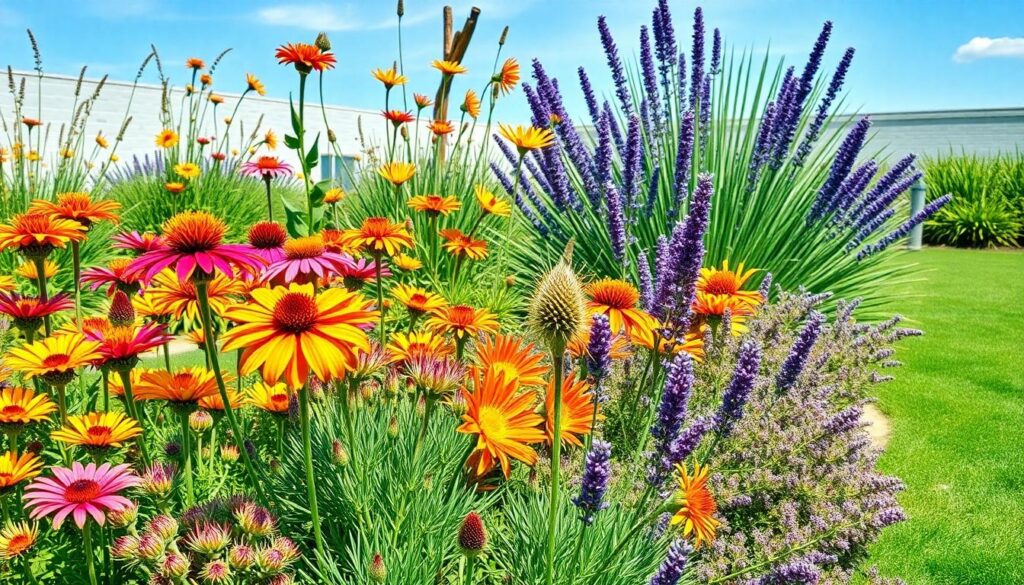Looking for plants that thrive whether it’s scorching, freezing, or pouring rain? We’ve got you covered with our guide to all-weather miracle plants that laugh in the face of extreme conditions.
These botanical superheroes aren’t just survivors—they’re thrivers. From drought-resistant succulents to frost-hardy evergreens, these resilient beauties maintain their charm year-round with minimal care. We’ll show you how these low-maintenance champions can transform your garden into a vibrant oasis regardless of what Mother Nature throws their way.
Join us as we explore these incredible plant varieties that promise to keep your industry looking spectacular through every season, saving you time, money, and frustration along the way.
10 All Weather Miracle Plants That Thrive in Any Climate
1. Snake Plant (Sansevieria)
Snake plants stand out as incredibly resilient houseplants that adapt to virtually any environment. They tolerate neglect, flourish in low light conditions, and require minimal watering, making them perfect for beginners. Their striking vertical leaves add architectural interest to any space while purifying indoor air by removing toxins like formaldehyde and benzene. We’ve seen snake plants survive weeks without water, still maintaining their vibrant green and yellow variegated patterns.
2. Sedum (Stonecrop)
Sedum varieties thrive in both scorching summer heat and frigid winter conditions without complaint. These succulent perennials store water in their fleshy leaves, allowing them to withstand prolonged drought periods. Their star-shaped flowers bloom in late summer, attracting beneficial pollinators to your garden. Sedums require almost no maintenance once established, spreading gradually to form attractive ground covers that suppress weeds naturally.
3. Yucca Plants
Yucca plants showcase remarkable adaptability with their sword-like leaves and impressive drought tolerance. They flourish in desert heat yet can withstand temperatures down to -30°F in some varieties. Their deep root systems access water sources far below the surface, making them self-sufficient in most conditions. Yuccas produce dramatic white flower spikes that create vertical interest in landscapes where few other plants survive.
4. Lavender
Lavender combines beauty, fragrance, and exceptional hardiness in one versatile package. Originally from Mediterranean regions, this aromatic herb has adapted to thrive in diverse environments around the industry. Its silvery-gray foliage retains moisture during dry spells while excellent drainage requirements protect it during rainy seasons. We appreciate how lavender continues flowering through multiple heat waves, filling gardens with calming scent and attracting beneficial insects.
5. Coneflower (Echinacea)
Coneflowers demonstrate remarkable resilience through extreme temperature fluctuations in any garden setting. These native prairie plants develop extensive root systems that withstand both drought and cold while requiring minimal care. Their colorful daisy-like blooms persist for months, providing reliable summer color when other plants have faded. Echinacea varieties now come in purple, white, yellow, orange, and red, offering options for every industry design.
6. Russian Sage (Perovskia)
Russian sage thrives under challenging conditions that would decimate less hardy plants. Its silvery-blue foliage and lavender flower spikes create a hazy, ethereal effect in landscapes from July through October. This perennial tolerates poor soil, pollution, and extended periods without water once established. We’ve observed Russian sage bouncing back after severe weather events that damaged surrounding plants, proving its exceptional adaptability.
7. Ornamental Grasses
Ornamental grasses offer four-season interest with virtually no maintenance requirements regardless of climate. Varieties like Miscanthus, Pennisetum, and Panicum remain attractive through drought, flooding, and temperature extremes. Their deep root systems prevent erosion while their swaying forms add movement to static landscapes. These grasses provide winter interest long after other plants have disappeared, standing tall through snow and ice.
8. Yarrow (Achillea)
Yarrow exemplifies the perfect low-maintenance perennial for challenging sites in any climate zone. Its feathery foliage remains attractive even during extended dry periods, while flat-topped flower clusters bloom for weeks in summer. Native yarrow varieties have evolved to withstand extreme conditions across North America and Eurasia. These plants actually perform better with neglect, developing stronger stems and more prolific flowering when not overwatered or fertilized.
9. Boxwood (Buxus)
Boxwoods provide evergreen structure and formality in landscapes facing variable weather patterns throughout the year. Their dense growth habit withstands snow loads, high winds, and seasonal temperature fluctuations without losing shape. Modern cultivars offer improved disease resistance and adaptability to different soil conditions. We value boxwoods for their ability to recover quickly from minor damage, maintaining their classic appeal with minimal intervention.
10. Daylilies (Hemerocallis)
Daylilies earn their reputation as the perfect perennial through unmatched resilience in diverse growing conditions. These flowering powerhouses adapt to clay soil, sandy soil, partial shade, and full sun situations with equal vigor. Their tuberous roots store nutrients and moisture, helping them survive both drought and flood conditions. Daylilies bloom reliably for weeks, with thousands of varieties offering endless color options for any industry design.
Aloe Vera: The Healing Succulent for Indoor and Outdoor Gardens
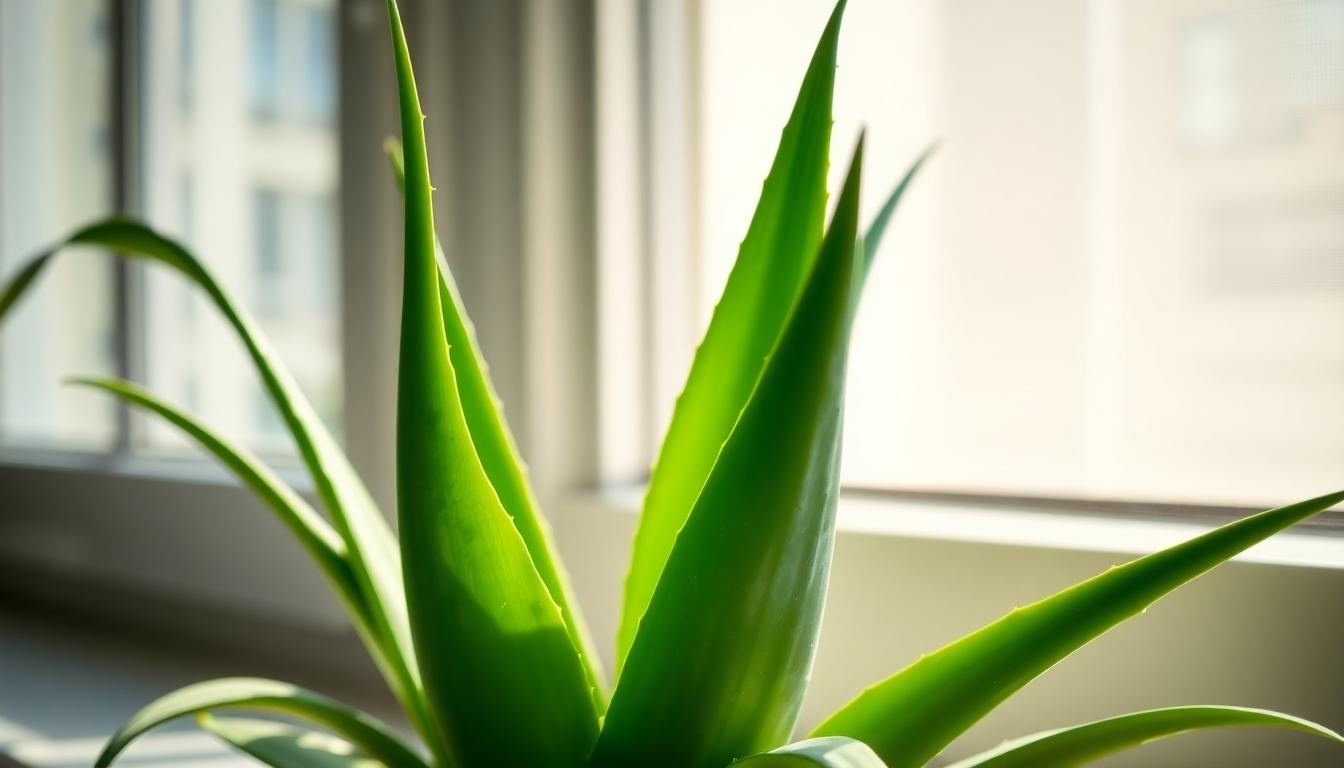
Aloe vera stands out as one of nature’s most versatile miracle plants, thriving in diverse conditions from indoor environments to outdoor gardens in USDA zones 9-11. This resilient succulent requires minimal care while offering many benefits, making it a perfect addition to any plant collection.
Medicinal Properties and Uses
Aloe vera’s therapeutic applications have been recognized for centuries across various cultures. Its gel-filled leaves contain powerful anti-inflammatory compounds that effectively treat burns, wounds, and skin irritations. Applying fresh aloe gel directly to minor burns provides immediate cooling relief and accelerates the healing process. Many people keep an aloe plant in their kitchen specifically for treating cooking burns and cuts. Beyond topical applications, aloe vera serves as an excellent air purifier, removing harmful toxins from your indoor environment. Research supports its ethnopharmacological uses, placing it among other “miracle” plants valued for their medicinal properties. The plant’s soothing properties make it a common ingredient in commercial skincare products, from moisturizers to sunburn relief gels.
Care Tips for Different Weather Conditions
Aloe vera’s remarkable adaptability makes it suitable for various environmental conditions with proper care. Indoor aloe plants thrive in bright, indirect light with minimal watering—once every three weeks is typically sufficient. Overwatering poses the greatest threat to indoor specimens, so allowing the soil to dry completely between waterings prevents root rot issues. Outdoor aloe prefers full sun to partial shade positions with well-draining soil that prevents moisture accumulation around roots. During extreme heat, providing afternoon shade protects the plant from scorching, while maintaining its drought-resistant nature. Cold temperatures below 50°F (10°C) can damage aloe leaves, necessitating relocation indoors during winter months in colder climates. Heavy rainfall requires special attention to drainage, as waterlogged soil quickly leads to root rot and plant failure. Using a cactus or succulent-exact potting mix enhances drainage and creates ideal growing conditions for this versatile plant. With these simple care strategies, aloe vera remains one of the most forgiving and rewarding plants for both novice and experienced gardeners.
Snake Plant (Sansevieria): Nature’s Air Purifier
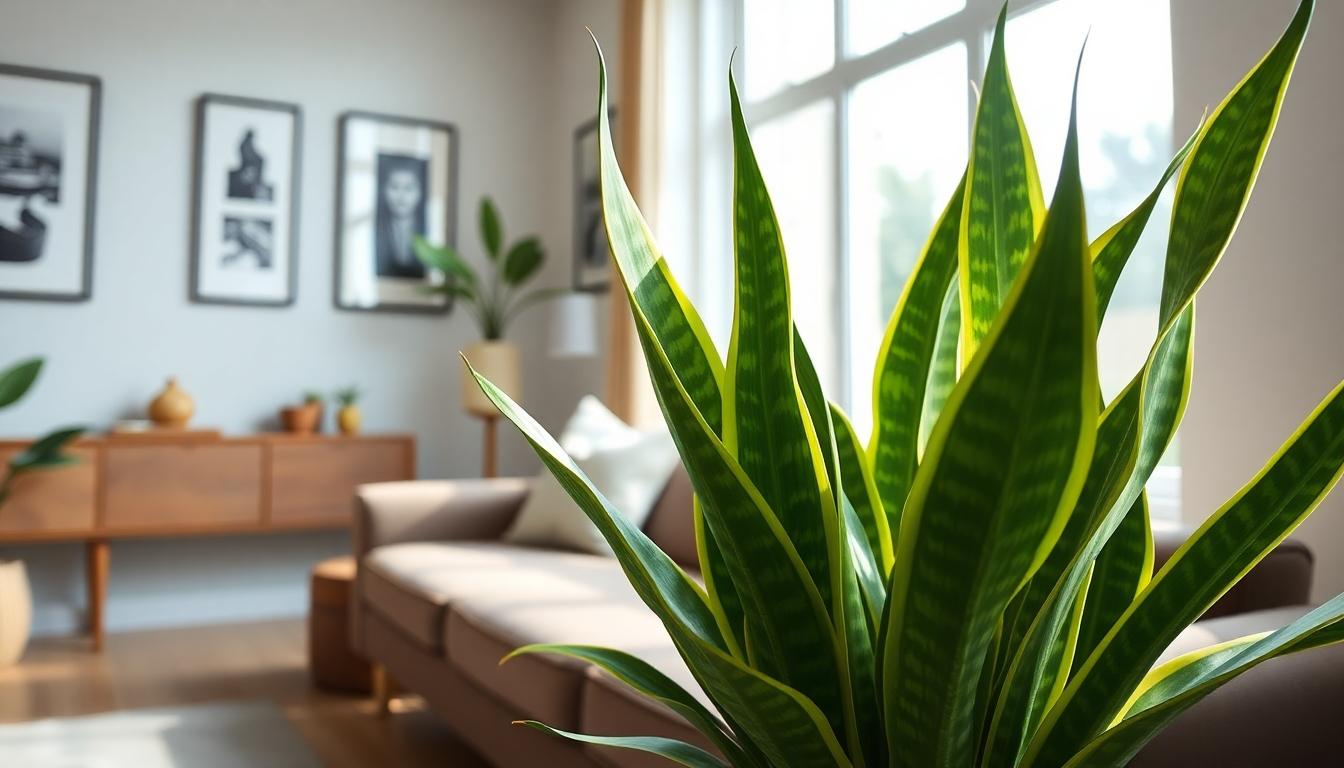
The Snake Plant stands as a true champion among resilient houseplants, earning its reputation as a “miracle plant” through exceptional hardiness and impressive benefits. This striking succulent features tall, sword-like leaves with distinctive patterns that add architectural interest to any space.
Benefits for Home Air Quality
Snake Plants excel as natural air purifiers, actively removing harmful toxins from your indoor environment. They effectively filter out formaldehyde and benzene, two common household pollutants found in cleaning products, furniture, and synthetic materials. Unlike many plants that only release oxygen during the day, Snake Plants continue this beneficial process at night, making them ideal bedroom companions for improved sleep quality. Their ability to maintain clean air contributes significantly to healthier living spaces, potentially reducing respiratory issues and creating a more comfortable home environment.
Surviving Neglect and Temperature Fluctuations
Snake Plants thrive even though inconsistent care, making them perfect for busy households or novice plant parents. They tolerate neglect remarkably well, often growing better when left alone rather than with excessive attention. These resilient plants adapt to a wide temperature range from 55°F to 85°F (13°C to 30°C), surviving conditions that would damage most houseplants. Low light conditions pose no problem for Snake Plants, as they easily adapt to dim corners and north-facing windows where other plants struggle. Their water requirements remain minimal, needing hydration only when the soil becomes completely dry, which might mean watering just once every 2-3 weeks in winter.
ZZ Plant: The Ultimate Low-Maintenance Houseplant
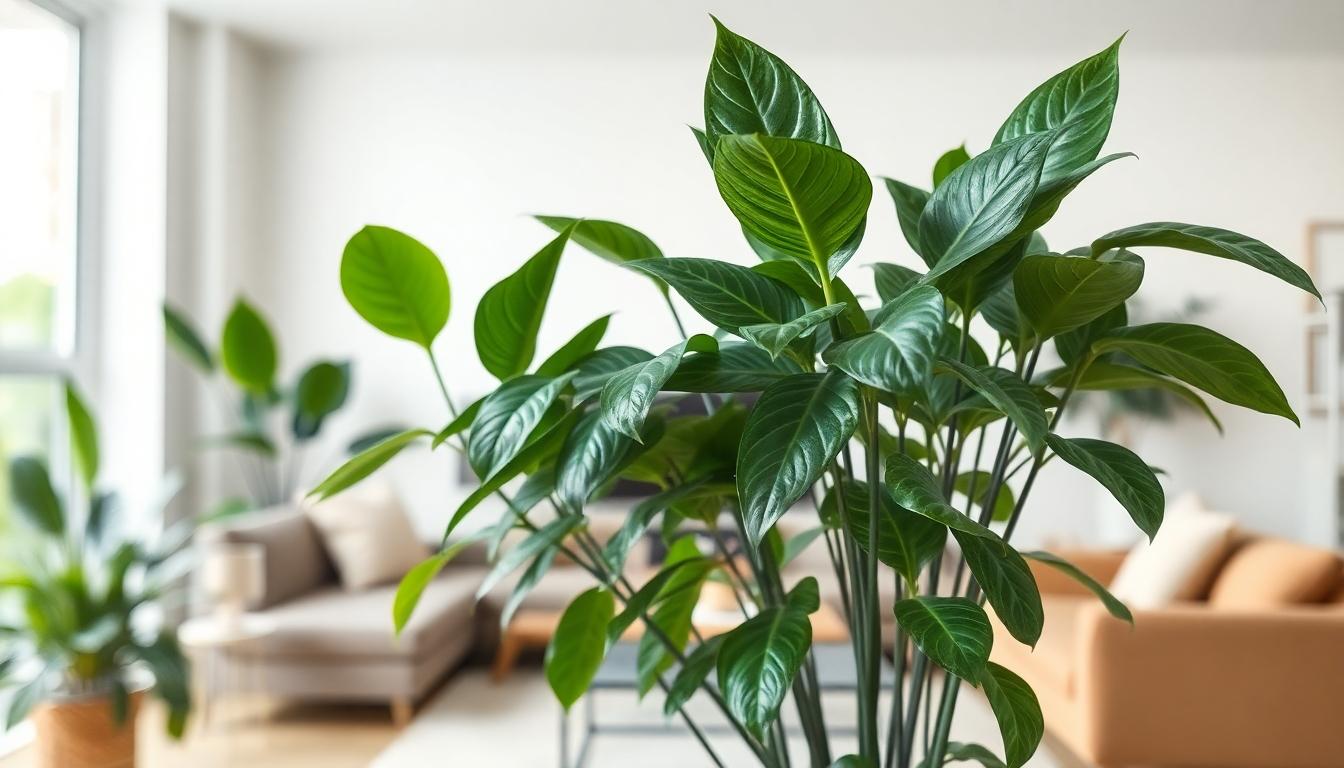
If you’re searching for a truly resilient houseplant that thrives on neglect, the ZZ Plant (Zamioculcas zamiifolia) deserves a top spot in your collection. This botanical marvel combines striking aesthetics with unmatched durability, making it perfect for busy households and plant novices alike.
Drought Tolerance Features
ZZ Plants possess remarkable drought resistance thanks to their specialized water storage system. Their thick underground rhizomes act as natural reservoirs, allowing them to survive for months without a single drop of water. These remarkable structures store moisture efficiently, enabling the plant to withstand extended dry periods that would kill most houseplants. You’ll notice the ZZ’s glossy, waxy leaves also help prevent water loss through evaporation, further improving its survival capabilities. Many plant owners report their ZZ Plants thriving even though forgotten waterings for 4-6 weeks at a time. Their natural adaptation to drought makes them ideal companions for travelers, forgetful waterers, or those living in arid climates with water restrictions.
Propagation Methods for All Seasons
Propagating ZZ Plants remains straightforward throughout the year with multiple effective approaches. Leaf cuttings offer the simplest method – simply snip a healthy leaf, let the cut end callus for a day, then place it in well-draining soil where it will eventually develop rhizomes and new growth. Division provides a faster alternative when repotting, as you can gently separate rhizome clusters to create new plants immediately. ZZ Plants thrive in indirect light conditions during propagation, requiring minimal intervention beyond occasional light watering. Their forgiving nature means propagation success rates typically exceed 80% regardless of the season. Professional growers particularly value their ability to develop roots year-round without requiring special timing or environmental adjustments.
Pothos: The Cascading Wonder That Grows Anywhere
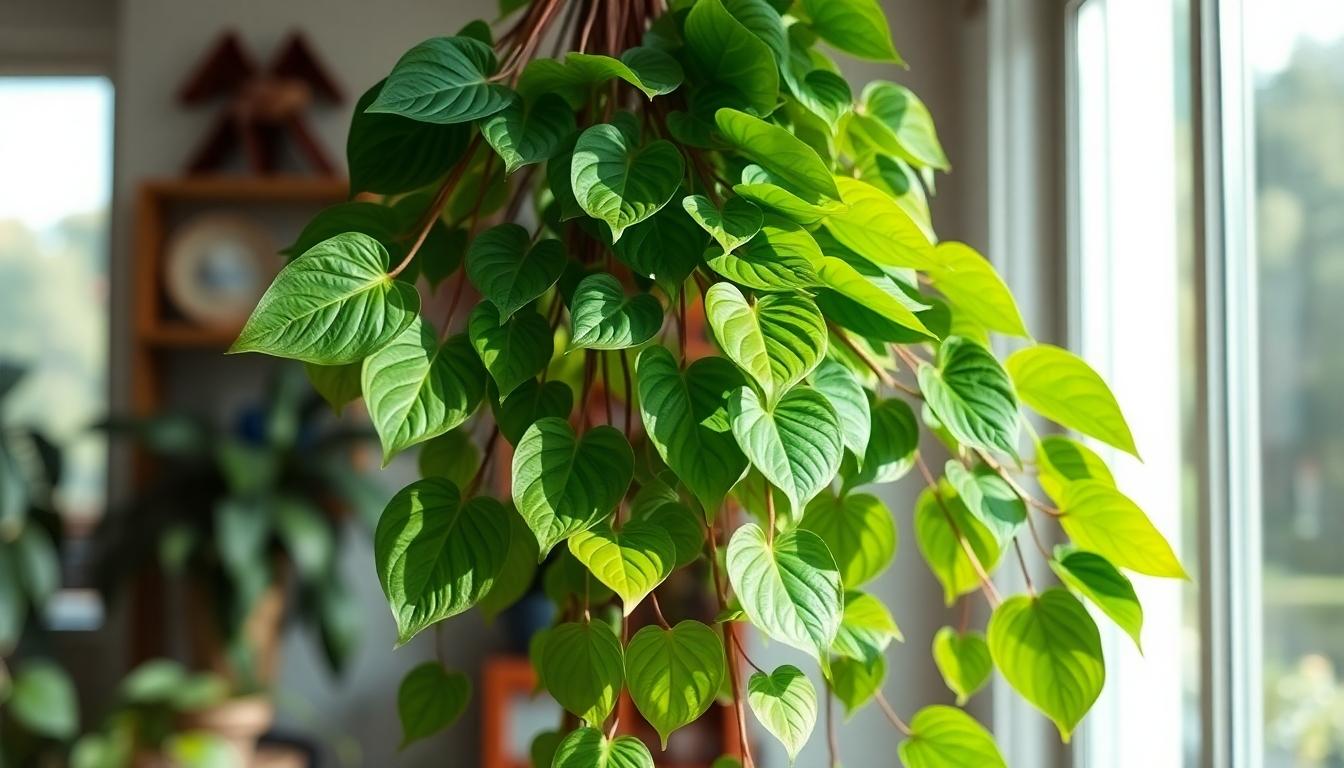
Pothos stands out as one of the most adaptable houseplants available today, earning its reputation as a true “miracle plant” that thrives in nearly any indoor environment. Its trailing vines and glossy, heart-shaped leaves add instant beauty to any space while requiring minimal attention from even the most forgetful plant owners.
Varieties for Different Light Conditions
Pothos varieties offer answers for virtually any lighting situation in your home. Golden Pothos showcases variegated yellow and green foliage that brightens up medium to low light areas without losing its distinctive patterning. Marble Queen features highly variegated white and green leaves that perform best in brighter indirect light, creating a stunning cascading display on shelves or hanging baskets. Neon Pothos brings vibrant chartreuse leaves that maintain their eye-catching color even in lower light conditions, though they’ll shine brightest with more indirect sunlight. Jade Pothos, with its solid green leaves, proves remarkably adaptable to extremely low light environments where other plants would fail to thrive, making it perfect for dim offices or bathrooms.
Water and Temperature Requirements
Pothos demonstrates exceptional drought tolerance, surviving weeks without water thanks to its efficient water storage system in stems and leaves. These plants prefer to dry out completely between waterings, typically requiring attention just once every 1-2 weeks depending on your home’s humidity levels and temperature. Temperature-wise, Pothos adapts comfortably to normal household conditions between 65-85°F, though it can tolerate brief periods outside this range without suffering damage. Their remarkable resilience to inconsistent care makes them particularly suitable for busy households, frequent travelers, or beginning plant enthusiasts. Pothos plants respond well to occasional misting in particularly dry environments but don’t require the high humidity levels that many other tropical houseplants demand.
Spider Plant: The Resilient Air-Cleaning Champion
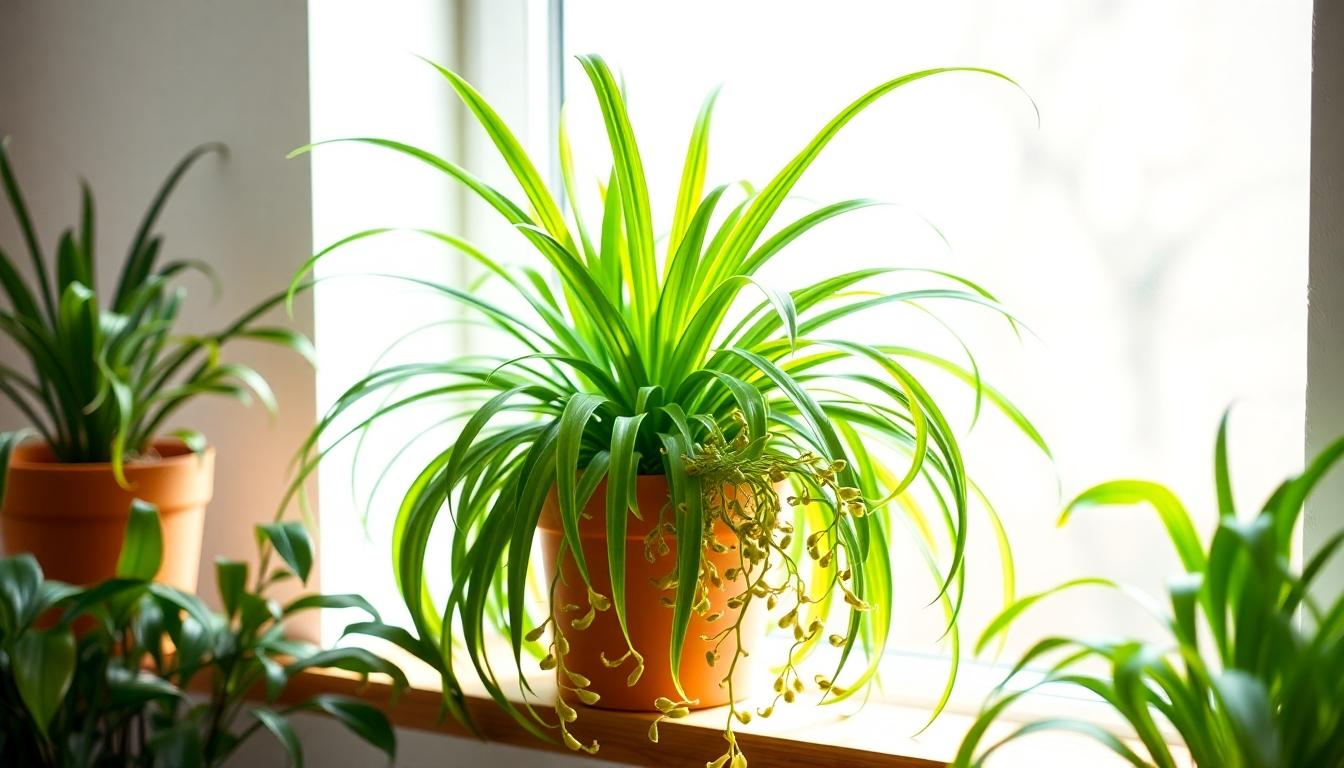
The Spider Plant (Chlorophytum comosum) stands out as one of nature’s most impressive all-weather miracle plants, combining striking aesthetics with remarkable resilience. We’ve found this popular houseplant to be an exceptional choice for gardeners of all skill levels due to its forgiving nature and impressive benefits.
Adaptability to Changing Environments
Spider Plants thrive in a wide variety of conditions, making them true champions of adaptability in the plant industry. They perform beautifully in different temperature ranges, from cooler rooms to warmer spaces, without showing signs of stress. Light requirements for these versatile plants are equally flexible, as they grow well in bright indirect light but also tolerate lower light conditions better than many other houseplants. Indoor environments with typical home humidity levels provide perfect growing conditions, though Spider Plants also flourish in outdoor settings when properly placed away from direct, harsh sunlight.
Perhaps most impressive is the Spider Plant’s air-purifying capability. These remarkable plants actively remove harmful pollutants including formaldehyde and xylene from indoor environments, functioning as natural air filters for cleaner home air quality. Their ability to adapt to changing conditions while simultaneously improving air quality makes them truly deserving of their “miracle plant” status.
Propagating Baby Spider Plants Year-Round
Spider Plants reproduce with incredible ease through their distinctive “spiderettes” or baby plants that dangle from long stems. These offshoots appear year-round when the plant reaches maturity, creating opportunities for continuous propagation regardless of season. Propagation success rates remain high throughout the year, allowing plant enthusiasts to expand their collection or share with friends regardless of when the urge strikes.
The propagation process couldn’t be simpler – wait until the baby plants develop small roots, then simply snip them from the mother plant and place them in water or directly into soil. New plants establish themselves quickly, typically showing signs of growth within weeks of being separated. This reproductive efficiency helps explain why Spider Plants have remained popular houseplants for generations, as their ability to multiply creates an endless supply of new plants with minimal effort.
Jade Plant: The Money Tree That Weathers All Storms
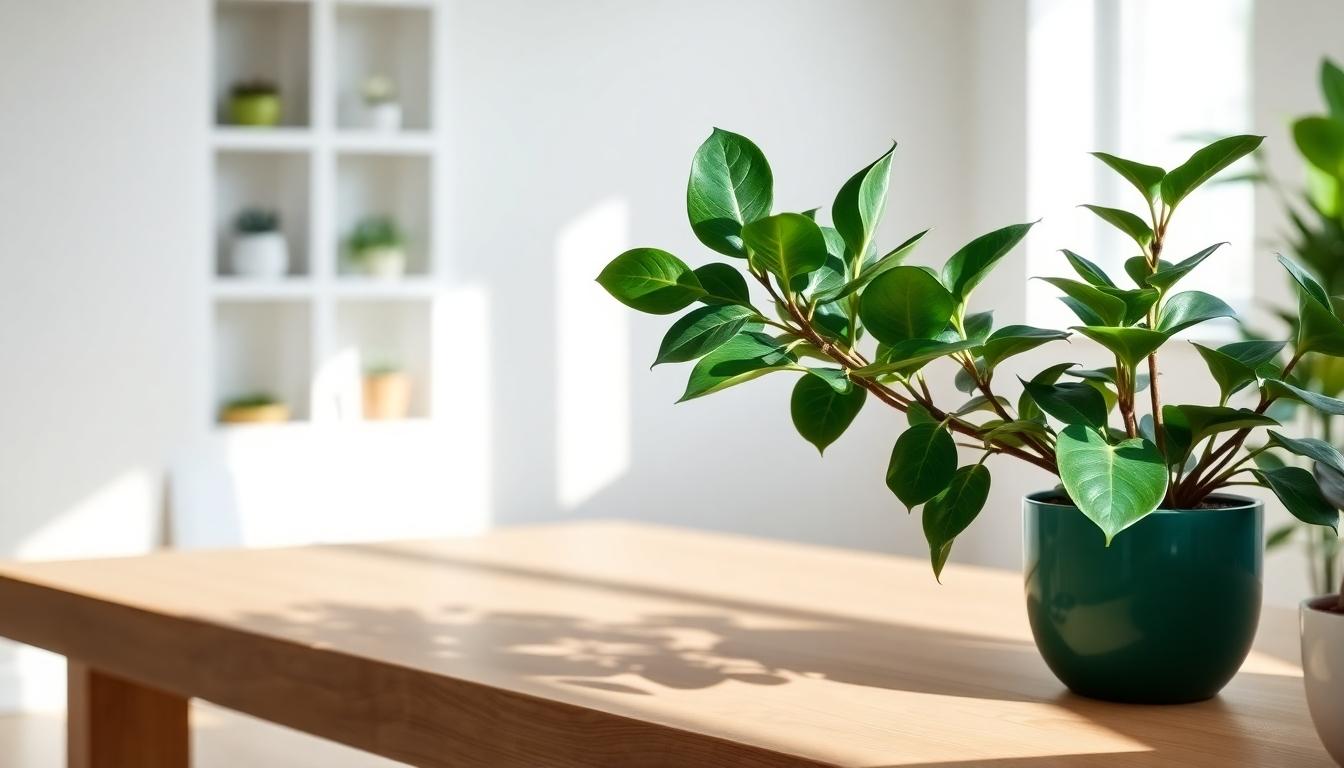
The Crassula ovata, commonly known as the jade plant, is a remarkably resilient succulent native to South Africa that thrives in diverse conditions. While not technically an “all-weather” plant, its impressive hardiness allows it to weather many environmental challenges, particularly in USDA zones 10-11 where it flourishes in temperatures between 65°F–75°F.
Symbolic Meaning and Decorative Value
Jade plants carry powerful symbolism in Feng Shui practices, where they’re often called “money plants” representing prosperity and longevity. Their distinctive thick, glossy leaves and woody stems create an appealing miniature tree-like appearance that enhances any indoor space. We’ve found these succulents make excellent focal points in home or office environments, requiring minimal maintenance while providing maximum visual impact. The jade plant’s aesthetic versatility allows it to complement various interior design styles, from minimalist modern to eclectic bohemian spaces.
Seasonal Care Guidelines
Jade plants demand different attention throughout the year to maintain optimal health. During spring and summer months, these succulents require placement in full sun to partial shade locations with watering only when the soil feels dry 1-2 inches below the surface. Well-draining soil becomes essential to prevent root rot, which remains the primary cause of jade plant failure.
Fall and winter care shifts dramatically as these plants enter a more dormant phase. Water frequency should decrease to approximately once monthly, while protection from temperatures below 50°F becomes crucial. Exposure to frost can severely damage the leaves, so we recommend moving outdoor specimens inside during cold spells.
Fertilization follows a seasonal pattern as well, with diluted balanced fertilizer (10-10-10) applied monthly during active growth periods. During dormant winter months, fertilization should be avoided entirely to respect the plant’s natural cycle.
Peace Lily: The Elegant Shade-Loving Survivor
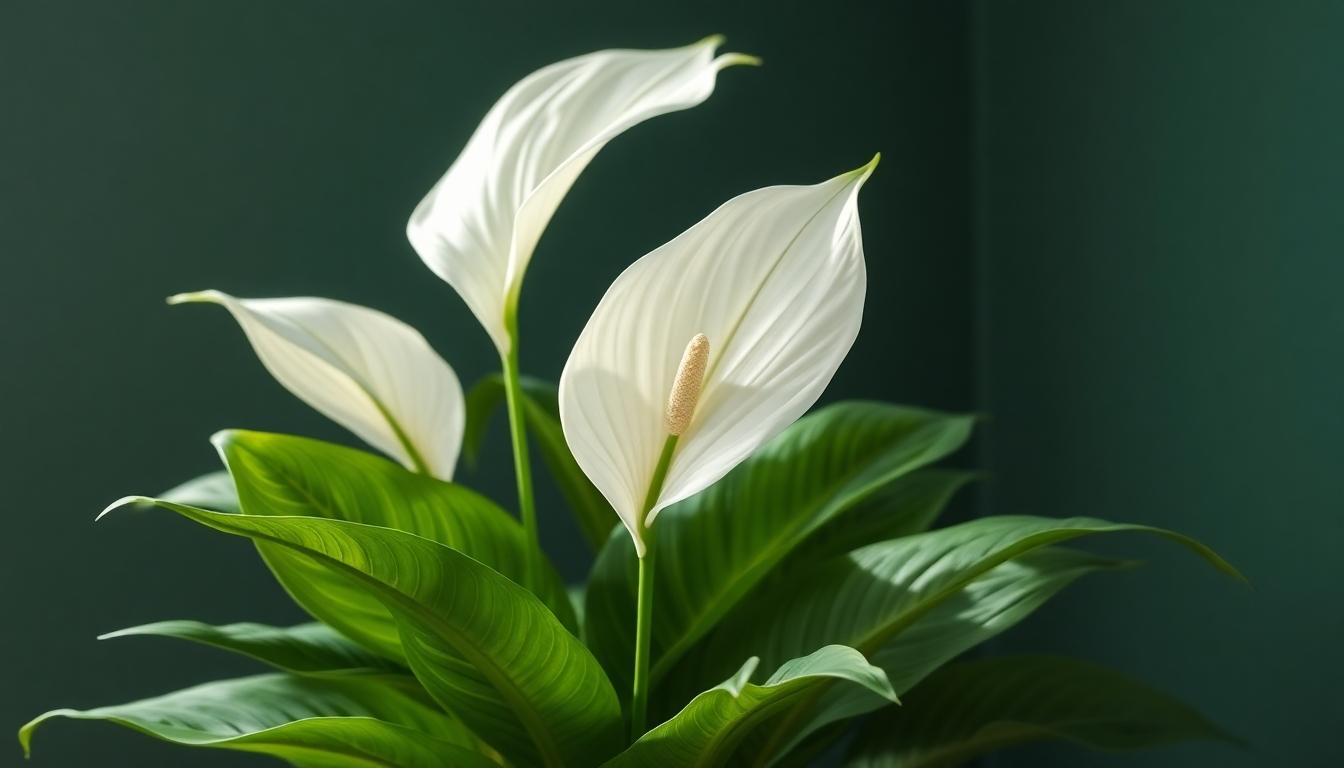
Peace Lily (Spathiphyllum) stands out as one of the most versatile and resilient houseplants available today. This tropical beauty combines striking elegance with remarkable adaptability, making it perfect for plant enthusiasts of all experience levels.
Humidity Preferences and Adaptation
Peace Lilies thrive in warm, humid environments reminiscent of their native tropical habitats in the Americas and Southeast Asia. These adaptable plants perform best in temperatures between 60°F to 80°F, creating an ideal comfort zone that aligns perfectly with most home environments. While they naturally prefer higher humidity levels, Peace Lilies show impressive resilience when faced with drier conditions, adapting remarkably well when provided with appropriate care. Their ability to flourish in deep shade to partial shade makes them perfect candidates for rooms with limited natural light, solving the common challenge of finding attractive plants for darker spaces. We recommend keeping the soil consistently moist without allowing the plant to sit in standing water, as this balance helps them maintain vigor even when humidity fluctuates.
Flowering Patterns Throughout the Year
Peace Lilies produce distinctive white spathes that dramatically contrast against their lush dark green foliage. These elegant white “blooms” (technically modified leaves that surround the true flowers on the spadix) can appear at any time throughout the year, though they emerge more abundantly during spring and summer months. Each bloom typically lasts several weeks, providing continuous visual interest regardless of season. Their year-round flowering potential sets Peace Lilies apart from many other houseplants that have limited blooming periods. The plant’s ability to produce these striking white features even in low light conditions further establishes it as a true “miracle plant” for indoor environments. We’ve found that maintaining consistent care practices encourages more frequent blooming, rewarding your attention with their classic, sophisticated appearance.
Peace Lilies offer additional benefits beyond their beauty, functioning as effective natural air purifiers that remove common toxins like benzene and formaldehyde from indoor environments. Their combination of aesthetic appeal, adaptability, and air-cleaning capabilities truly earns them the “miracle plant” designation in the houseplant industry.
Rubber Plant: The Bold Statement Plant for All Seasons
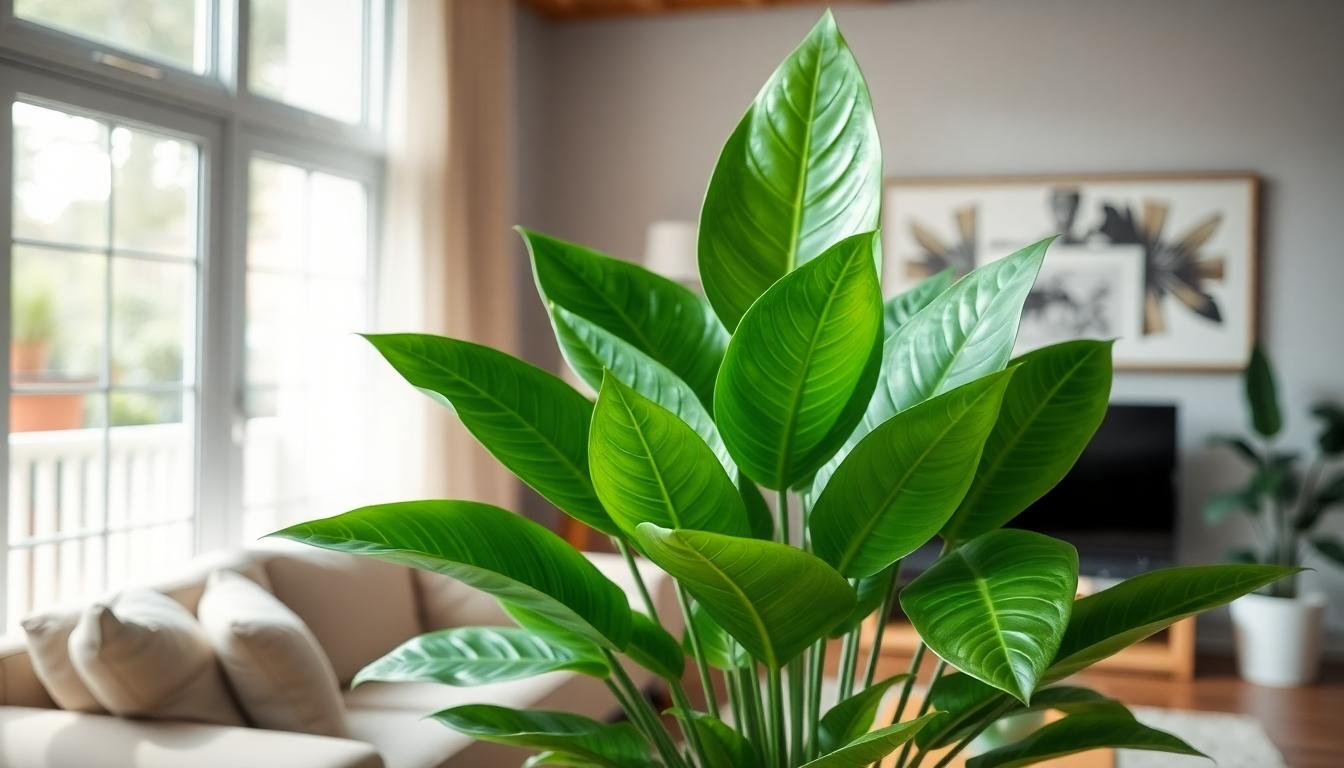
The Rubber Plant (Ficus elastica) stands out as one of the most adaptable houseplants, bringing dramatic flair to interior spaces regardless of outside weather conditions. Its glossy, leathery leaves create an instant focal point while offering remarkable resilience that makes it perfect for plant enthusiasts of all experience levels.
Growth Patterns in Various Climates
Rubber Plants demonstrate impressive adaptability across most indoor climate conditions, making them true all-weather champions. They thrive in bright, indirect light but can tolerate lower light situations, though growth may slow in such conditions. Temperature tolerance is equally impressive, as these plants flourish in environments maintained above 55°F (13°C), adapting well to standard household temperatures year-round. While not frost-hardy for outdoor cultivation in colder regions, Rubber Plants excel in controlled indoor environments regardless of external seasonal changes. Their growth pattern typically features upward development, with proper care resulting in a striking, tree-like specimen that can reach impressive heights indoors. Leaf development varies based on light exposure, with brighter conditions producing larger, more vibrant foliage that showcases the plant’s characteristic deep green or variegated coloration.
Maintenance Tips for Long-Term Health
Successful Rubber Plant care requires attention to a few key factors that ensure its continued health and impressive appearance. Light management ranks among the most critical considerations, with placement in bright, indirect sunlight offering optimal results while avoiding direct sun that might scorch the distinctive leaves. Watering should follow a moderate schedule, allowing the topsoil to dry completely between thorough waterings to prevent root rot issues that commonly affect these plants. Regular leaf cleaning proves essential for maintaining the plant’s signature glossy appearance and deterring common pests like spider mites that may otherwise take up residence on the broad leaf surfaces. Occasional rotation helps ensure even growth, preventing the plant from developing a permanent lean toward light sources. Fertilization benefits Rubber Plants during active growing seasons (spring and summer), with diluted liquid fertilizer applied monthly to support robust development. Pruning can be performed as needed to control size and shape, with each cut encouraging branching that creates a fuller, more impressive specimen over time. Temperature stability also contributes significantly to plant health, with protection from cold drafts and sudden temperature fluctuations helping maintain the Rubber Plant’s year-round vigor.
Yucca: The Desert-Native That Thrives Everywhere

Yucca plants stand as true botanical survivors, evolving from harsh desert environments to become some of the most adaptable ornamentals for any industry. These architectural beauties bring dramatic form and texture to gardens across varied climate zones while requiring minimal maintenance.
Cold and Heat Tolerance Mechanisms
Yuccas have developed remarkable resilience to extreme weather conditions that few other plants can match. Their thick, waxy leaves create an effective barrier that prevents excessive water loss during scorching temperatures. Deep root systems allow these plants to access moisture far below the soil surface, ensuring survival during prolonged drought periods. Yuccas can withstand freezing temperatures thanks to specialized cellular adaptations that prevent tissue damage. Their ability to slow metabolic processes during temperature extremes helps them conserve energy when conditions become unfavorable. We’ve seen yuccas thrive in environments ranging from desert heat to areas with occasional snow, demonstrating their exceptional temperature adaptability.
Industry and Container Planting Options
Yuccas offer versatility that makes them perfect candidates for various planting scenarios in your outdoor spaces. Their striking architectural form creates bold focal points in xeriscape gardens, rock gardens, or as specimen plants in traditional landscapes. Container planting works exceptionally well for yuccas, allowing you to showcase their dramatic silhouettes on patios or entryways. Their compact root systems adapt surprisingly well to container constraints without compromising plant health. Yuccas provide year-round visual interest with their evergreen foliage and impressive flower stalks that emerge during blooming seasons. Pairing them with complementary drought-tolerant plants like ornamental grasses or succulents creates low-maintenance industry groupings that maintain visual appeal throughout changing seasons. Larger varieties make excellent security plants along property boundaries, while smaller species work beautifully as accent plants in mixed borders.
How to Create a Collection of All Weather Miracle Plants for Your Home
Adding these botanical superheroes to your garden and home isn’t just practical—it’s groundbreaking. From the air-purifying Snake Plant to the drought-defying Sedum and versatile Aloe Vera these resilient plants offer beauty without the burden of constant maintenance.
We’ve shared these miracle plants because we believe everyone deserves a thriving garden regardless of climate challenges or gardening experience. By incorporating these hardy specimens you’ll create spaces that remain vibrant through scorching summers freezing winters and everything in between.
The best part? You don’t need to choose just one. Mix drought-tolerant succulents with frost-hardy evergreens for a ever-changing collection that withstands whatever Mother Nature delivers while bringing year-round joy with minimal effort.
Frequently Asked Questions
What makes a plant “resilient” to extreme weather?
Resilient plants have adapted to survive harsh conditions through various mechanisms. Drought-resistant plants like succulents store water in their leaves and have waxy coatings to prevent water loss. Cold-hardy varieties have antifreeze compounds in their cells. Many resilient plants develop deep root systems to access water and nutrients during stress periods. These adaptations allow them to thrive with minimal care while maintaining their beauty throughout changing seasons.
Which plants are best for hot, dry climates?
For hot, dry climates, choose drought-tolerant champions like Sedum, Yucca, and Aloe Vera. Snake Plant and ZZ Plant are excellent indoor options that require minimal watering. Russian Sage and Lavender thrive in heat and provide beautiful blooms with little maintenance. Ornamental grasses add texture while withstanding high temperatures. These plants have evolved water-storage capabilities and efficient root systems that help them flourish even during extended dry periods.
What are the most low-maintenance indoor plants for beginners?
The most beginner-friendly indoor plants include Snake Plant, ZZ Plant, and Pothos. These “botanical superheroes” thrive on neglect and can survive weeks without water. Spider Plants produce baby plants easily for propagation. Jade Plants require minimal attention while bringing good fortune according to Feng Shui. Peace Lilies indicate when they need water by drooping slightly. All these plants adapt to typical home conditions and forgive occasional care mistakes.
How often should I water resilient plants?
Most resilient plants prefer drying out between waterings. Indoor varieties like Snake Plant, ZZ Plant, and Pothos need watering only when soil is completely dry (every 2-4 weeks). Succulents and cacti require even less frequent watering (monthly in winter). Always check soil moisture before watering—insert your finger 1-2 inches into the soil and water only if it feels dry. Overwatering is the most common cause of death for resilient plants.
Can resilient plants still look attractive in a garden design?
Absolutely! Resilient plants offer diverse colors, textures, and forms for visually striking gardens. Lavender provides fragrant purple blooms, while Coneflowers add bright colors. Ornamental grasses create movement and winter interest. Boxwood offers evergreen structure, and Daylilies produce vibrant flowers in various hues. By combining these hardy plants thoughtfully, you can create a garden that’s both beautiful and low-maintenance, with year-round visual appeal regardless of weather challenges.
How do resilient plants save money and time?
Resilient plants save money by reducing replacement costs—they survive seasonal extremes that kill less hardy plants. They minimize water bills through efficient water use and require fewer fertilizers and pesticides. Time savings come from reduced maintenance needs: less frequent watering, pruning, and pest management. Many resilient varieties, like Spider Plants, also propagate easily, allowing you to expand your garden for free. Their self-sufficiency means less worry and more enjoyment.
Which resilient plants are best for air purification indoors?
Snake Plant, Peace Lily, and Spider Plant are top air purifiers among resilient houseplants. NASA research confirms they remove toxins like formaldehyde, benzene, and xylene from indoor air. Snake Plants uniquely convert CO2 to oxygen at night, making them ideal for bedrooms. Rubber Plants with their large leaves are excellent at capturing particulate matter. These plants improve air quality while requiring minimal care, creating healthier living spaces with little effort.
Can resilient plants survive both indoor and outdoor environments?
Several resilient plants transition well between indoor and outdoor settings. Aloe Vera thrives in both environments, particularly in USDA zones 9-11. Snake Plants can vacation outdoors during summer in partial shade. Jade Plants enjoy outdoor summer months but must return indoors before frost. ZZ Plants prefer staying indoors but adapt to protected outdoor areas in warm climates. When transitioning plants, gradually acclimate them to new light conditions to prevent shock.
How do I propagate resilient plants to expand my collection?
Most resilient plants propagate easily. Spider Plants produce ready-to-plant “spiderettes”—simply place in soil when roots form. Pothos and ZZ Plants grow from stem cuttings placed in water until roots develop. Snake Plants propagate through leaf cuttings or division. Jade Plants grow from leaf or stem cuttings left to callus before planting. For succulents, allow broken pieces to dry for 2-3 days before placing in well-draining soil. Most propagation succeeds year-round with minimal effort.
What soil conditions do resilient plants prefer?
Most resilient plants prefer well-draining soil that prevents root rot. Succulents, Yucca, and ZZ Plants thrive in sandy, porous mixes. Adding perlite or coarse sand improves drainage for container plants. Outdoor resilient varieties like Yarrow and Coneflower adapt to poor soil conditions but perform best with occasional organic matter addition. Avoid heavy clay soils that retain too much moisture. For indoor plants, commercial cactus or succulent mixes work well for most resilient varieties.

